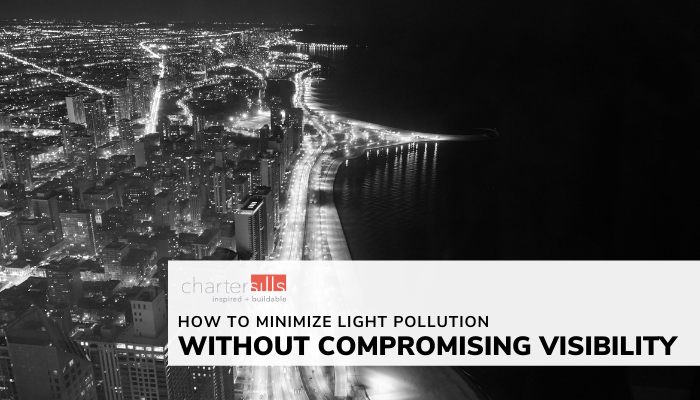With the holidays approaching and the evenings growing longer and longer, we often look to bright twinkling lights to cheer us up. Whether it be simple strings of colorful lights, or a bright dynamic cityscape lighting up the sky, there is a certain beauty to illumination at night. But how much is too much? As revolutionary as the light bulb has been for humans, there have certainly also been downsides to 24-hour brightness, namely light pollution.
For residents of urban centers, seeing the stars often involves a far-off travel destination. But the impact of light pollution goes beyond simply not seeing the night sky as clearly. Light pollution can have serious effects on circadian rhythms, wildlife behavior, and the health of ecosystems. In this blog post we explore ways that illumination can be designed to minimize light pollution, without compromising visibility.
Light pollution and its impacts
The International Dark Sky Association defines light pollution as “the inappropriate or excessive use of artificial light.” Light pollution alters natural lighting levels at night, creating uncomfortable glare, brightening the night sky, illuminating areas where lighting is not needed, and resulting in a sort of disorientating illumination clutter, with too many light sources clumped together.
In mapping a world atlas of artificial sky luminance, researchers estimate that over 80% of the world’s population lives with some degree of light pollution, a number that jumps up to 99% in Europe and the United States. Constant exposure to nighttime light disrupts humans’ body clocks and has been linked to sleep disorders, depression, and even illnesses such as diabetes or cancer. Glare from night lighting can distort the vision of wildlife near roadways, leading to accidents. Artificial light can also disrupt layers of an ecosystem, negatively impacting plant physiology, and disrupting animal migratory patterns.
The primary sources of light pollution include exterior and interior building lights, streetlamps, billboard lighting, or parking lot lights. In addition to being disruptive, these light sources are often wasteful. The building codes may be older and allow inefficient light sources. Exterior light sources may be unshielded, create glare, or be angled in such a way that most of the output is not even useful.
How can architectural lighting designers minimize light pollution?
The primary ways lighting designers can reduce the volume of light pollution involve reining in “intensity, timing, quantity, and quality of emitted light.” Dimmers, timers, and motion sensors can greatly reduce inefficiencies, keeping the lights off when they are not needed.
In a blog post earlier this year, we discussed 4 key reasons why a lighting control system is needed. Reason #3 focused on daylight harvesting and the idea that a lighting control system can reduce energy consumption by avoiding wasteful overlighting when natural light is available. Along the same lines, reducing energy consumption by not lighting exteriors unnecessarily at night, in order to reduce light pollution, constitutes another helpful reason for a control system. Timers and dimmers can limit lighting to where it is specifically needed and not only help reduce sky glow, but also reduce wasteful, unnecessary energy use.
The key to minimizing light pollution does not only involve turning the lights off, however. Shielding outdoor light fixtures is a helpful way to direct light where it’s needed, and keep it from being emitted up into the sky, where it serves no purpose, and as we have seen, in fact creates harm. Opaque shields with cutoff angles can improve visibility and reduce glare and skyglow.
Using lights that emit a warm glow, as opposed to blue light, can also help reduce light pollution. Blue light can travel farther because it is carried over a shorter wavelength, leading to more chances of contributing to disruptive skyglow. The International Dark Sky Association (IDA) recommends color temperatures below 3000K, and they even offer a Fixture Seal of Approval that provides third-party certification for products that help prevent or reduce light pollution.
Being aware of what’s happening in the neighborhood is another way lighting designers can help fight light pollution. Observing the impact other buildings have on the area can help prevent against unwanted illumination clusters.
By harnessing new technologies as well as improved understanding of how light pollution spreads around the world, as architectural lighting designers we can work towards finding a balance between the need for nighttime illumination and the need for darkness that will benefit people and the planet as a whole.


